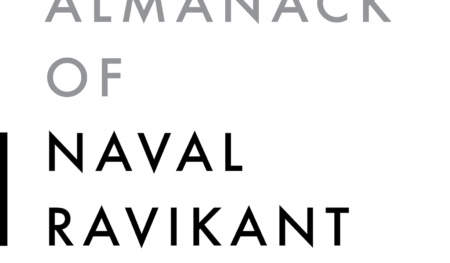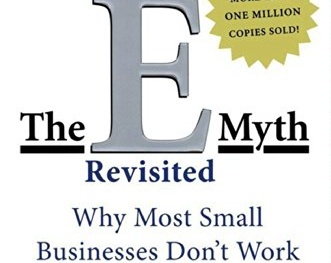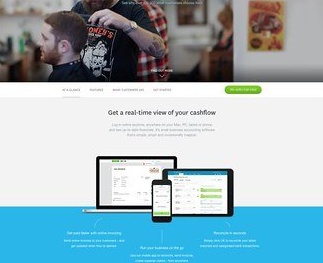If you’re a personal trainer and want to try running your own gym or you’re just a fitness enthusiast with an entrepreneurial mindset, this article will walk you through everything you need to know about how to start a gym.
Step 1: Research and Validate Your Idea
Step one for any business venture should be to research and validate your idea. Gyms have a large upfront capital investment, so understanding why people will buy from you and not someone else is critical to making your gym a success. Here’s where to start.
Market Research
Begin with market research. What market need are you trying to meet? Analyse the local market, identify potential customers’ needs, and evaluate your competition. Stay updated with current trends. Familiarise yourself with local regulations. This information will guide your business plan (more on this later), cost estimates, and revenue projections. Proper research reduces risks and positions your gym for success.
USPs (Unique Selling Points)
There are thousands of gyms across Australia, what makes yours different? It could be a boutique offering, with personalised service at a higher price point, or a budget-friendly option that caters to everyone. What specialist expertise do you bring to the table? Do you want to build a simple, no frills gym, or a holistic wellness centre? Drafting up and understanding your own USPs will guide all other aspects of your business.
A good understanding of your USPs will also form the basis of your marketing plan. If you understand who you are trying to cater to, creating a marketing message becomes a whole lot simpler. You can identify communication channels and messaging opportunities with more precision.
Operating Hours
Many gyms operate 24/7 in today’s market. This can be a bonus to potential customers, but will increase your operating costs significantly due to increased staff, security, and utility bills. Whether your gym should open 24 hours a day depends on your client base, location, and the type of gym. If you’re opening a gym that will make significant revenue from running classes, you probably don’t need to be open 24 hours a day. Conversely, if your gym will mostly be for basic weight training, opening 24/7 is wise to remain competitive.
Location, Location, Location
Location is a vital consideration when opening your gym. The location determines the visibility, accessibility, and potential customer base of your gym. Here are some factors to consider:
- Size and layout: Enough space to accommodate equipment, workout areas, changing rooms, and potential classes.
- Zoning and permissions: The property must be zoned for commercial or business use and should allow for a gym or fitness centre operation.
- Accessibility: Easy access, proximity to public transport and major roads, and ample parking facilities are key.
- Infrastructure: Adequate electrical, plumbing, and ventilation systems to support gym operations.
- Safety: A secure location with minimal safety hazards. Check for any structural issues or needed repairs.
- Future expansion: Space or options to expand if the gym grows in membership or services.
- Visibility: Located in a high footfall area or main road for increased visibility and potential walk-in clients.
- Lease terms: Understandable and favourable lease terms, including rent, duration, and any restrictions.
- Atmosphere: The overall feel of the property. Industrial spaces might offer a modern feel, while more traditional commercial or retail properties provide a polished look.
- Cost: Ensure the property fits within your budget, considering not just the rent but also renovation and maintenance costs.
A strategic location can greatly influence member acquisition and retention rates. It’s not just about finding a place; it’s about securing the right place for your gym’s success.
Step 2: Create a Financial Plan
There’s no getting around it: starting a gym costs a lot of money upfront. Creating a detailed financial plan makes you aware of initial costs and projects revenue and return in the future. Here is what to include.
Initial Costs
Your upfront capital spending includes:
- Gym equipment
- Fit out
- Signage
- Setting up the reception area
- Small consumables like towels, hand sanitiser, and wet wipes
Ensure you accurately estimate these initial costs to start your gym on a solid financial foundation. You may want to start considering financing options, including leasing and borrowing, to fund the initial purchase of equipment (more on this later).
Revenue Projections
Revenue is calculated as a function of the number of clients you expect to have, multiplied by the amount you charge. Your charges may be a recurring subscription package, a per gym visit, charges for classes, or a combination of all of the above. This will be driven by the research into your target market. A premium product may have less clients but charge a higher rate, whereas a budget product will be the opposite. You also need to consider your capacity limitations; what is the maximum number of people you can service at any point in time? Let’s look at a brief example.
You project you will have 150 members at a membership cost of 20 dollars a week, then the monthly revenue from memberships would be 150 (number of members) x 20 (weekly price) x 4 (number of weeks in a month) = $12,000
You will also run weekly yoga classes which are free for members but $15 per session for non-members. The classes are always full and are capped at 30 people, with a 50/50 split of non-members and members. So on top of memberships you also get 15 (dollar price per session) x 15 (number of non-members paying for the session) x 4 (number of classes per month) = $900
And finally, you offer one-off day passes to non-members at $10 a session. On average, in a month, you sell 20 one-off passes, adding an additional $200 to your monthly revenue.
So, based on these calculations your monthly revenue from memberships, yoga classes, and day passes come to 12,000 + 900 + 200 = $23,000.
This is of course a simplified version, but should give you some idea.
Calculate Expenses
Your direct expenses are those costs directly involved in running the business. For example, employing trainers to run a class is a direct cost of those classes.
Your indirect costs (also called overheads) are the rest of the costs you will incur. The biggest of these will be rent and also includes electricity and water, administration costs, legal and accounting and don’t forget about insurance. This is especially important for a gym and to limit your risk.
So, if your direct expenses total $6,000 dollars per month, and your indirect costs come to $4,000 then your total expenses come to $10,000 per month.
Calculating Projected Net Profit
Calculating your projected net profit is very simple, you just subtract your total expenses from your total revenue. So, subtract the $10,000 in total expenses in our example from the $23,000 in total revenue, and you’re left with $13,000 in net profit per month. This is the money you can use to pay yourself a wage and reinvest in the business.
Always be prepared for unexpected costs; having a contingency fund is advisable. Understanding and managing your finances effectively is the backbone of any successful business. Contact JD Scott + Co to help with your financial planning today.
Step 3: Write a Business Plan
It’s now time to bring together all your research into a written plan. A business plan outlines your vision, goals, and the strategies to achieve them. Detail the market research you’ve performed, USPs, and target audience. Include your financial projections, covering costs, revenues, and profitability. This document is not just for initial planning; it’s a reference to keep your business on track.
If seeking external funding, a well-drafted business plan is essential to demonstrate the viability and potential of your business to investors or lenders. Not sure where to start? Download our free business plan template.
Step 4: Understand Your Legal and Financial Obligations
As with starting any business, you need to understand the legal and financial obligations with starting a gym.
Choose Your Business Structure
Your choice of business structure influences your liabilities, tax obligations, and growth prospects. Here’s a brief overview:
- Sole trader: This means operating under your personal name. This structure is straightforward and inexpensive but places all legal and financial responsibilities on you.
- Partnership: If you’re opening the gym with someone else, this structure splits the responsibilities. Both partners share financial and legal obligations.
- Company: This structure gives you liability protection and a lower tax rate of 25%. However, it also incurs more complex legal and tax obligations. If you choose this option, you’ll also need a Director Identification Number.
Dig deeper into choosing the right business structure.
Starting as a sole trader and transitioning later to a partnership or company is also feasible. For insights on this transition, refer to our PDF guide on switching from a sole trader to a company, which also highlights potential tax implications.
Tax and GST Foundations
Taxes are unavoidable. Key points to understand when starting a gym are:
Registering for GST: Should your annual revenue surpass a specified threshold, you must register for Goods and Services Tax (GST). This means adding an extra charge to your services and relaying it to the tax department. Find out more about the specifics of registering your gym.
Core tax obligations: Owning a gym means handling taxes like income tax, corporate tax, and, if you employ staff, payroll tax.
Deductions: Many tax deductions are available, from gym equipment expenses to utilities. Capitalise on these to minimise your tax deductions.
Grasping the intricacies of tax and GST can be challenging, but being proactive ensures you steer clear of potential pitfalls down the road.
Step 5: Financing Your Gym
There are a few different ways to finance your gym. You do not need to choose just one; most people use a combination.
- Personal Savings: Using your personal savings means no interest, no paybacks. Yet, if things don’t work out, you’ll have nothing to fall back on.
- Bank Loans: Bank loans are the most common funding source for gyms. If applying for a loan, make sure you have a well-written and detailed business plan.
- Investors: Investors are also an option when opening your gym. This includes venture capitalists or angel investors. Remember, in return for their capital, they’ll usually want equity.
- Grants: Australia offers many grants and financial programs, especially for small businesses. You can use the grants and programs finder to see if there’s one relevant to you.
Step 6: Getting Ready to Open
Once you’ve completed the above, you’re nearly ready to open. Here are some final things to do before opening your gym:
Define Your Team Structure
Employees or contractors: Decide between full-time trainers or specialised part-time instructors. Understand their legal and tax implications.
Legal hiring requirements: Meet all legal standards, including wage laws and superannuation. JD Scott & Co can assist with payroll specifics.
Market Your Gym
- Branding: Define your gym’s identity, including mission and values.
- Website: Essential for class schedules, trainer details, and member bookings.
- Social media: Generate interest and share class information, health tips, and member promotions.
- Networking: Attend fitness events, collaborate with local businesses.
- Direct mail: Send offers to local residents to increase membership.
- Public relations: Engage local media for gym promotion and events.
- Partnerships: Collaborate with related health and fitness entities for mutual benefits.
Always remember that marketing your gym requires a blend of showcasing facilities, expertise, and your USPs.
Track your Progress
Once you’re up and running you need to continue to monitor progress.Some key things you want to keep track of include:
- New customer sign-ups and customer churn. This also helps you measure the success of your marketing efforts
- Basic financials, including revenue, and profit
- Cashflow (how much cash is coming in and how much goes out)
- Profit ratio (basically how much profit you make for every $1 of revenue. Measured at profit divided by sales for a given period).
- Customer acquisition costs – how much does it cost you to acquire each new client?
- How long before you become profitable. See our article on how to calculate your break even point.
We Can Help Your Gym Succeed
If you follow the above steps, you’ll be well on your way to starting a successful gym. As with all businesses, continuous evaluation and adaptation are key to long-term success, and engaging a trusted accountant like JD Scott + Co increases your likelihood of success. Contact us today to find out how we can help you.














